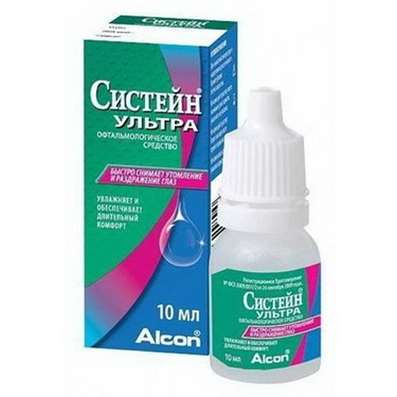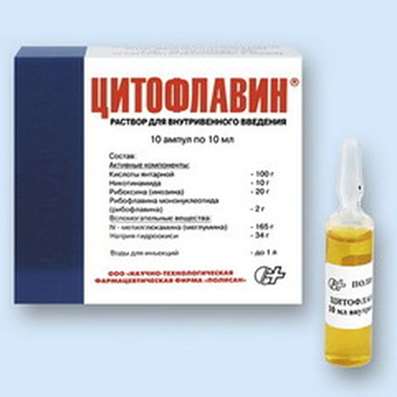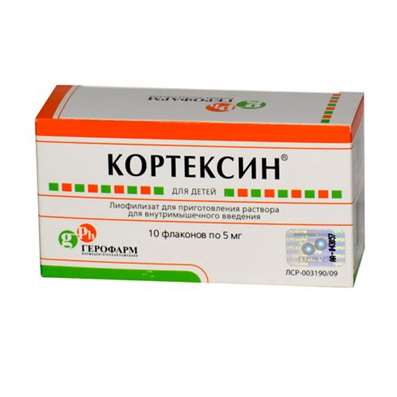Instruction for use: Noophen
I want this, give me price
Dosage form: capsules
Active substance: Aminophenylbutyric acid
ATX
N05BX Other anxiolytics
Pharmacological groups:
Nootropic remedy [Nootropics]
Nootropic means [Anxiolytics]
The nosological classification (ICD-10)
F06.6 Organic emotionally labile [asthenic] disorder: Somatogenic depression; Somatogenic psychosis
F10.3 Abstinence: Alcohol withdrawal syndrome; Abstinence syndrome; Abstinence syndrome with alcoholism; Abstinence; Alcohol abstinence; Alcohol withdrawal status; Alcohol withdrawal syndrome; Postabstinctive disorder; Post-abstinence condition; Hangover syndrome; Abstinence syndrome; Alcohol abstinence syndrome; Alcohol withdrawal syndrome; Abstinence condition
F41.9 Anxiety disorder, unspecified: Neurotic disorders with anxiety syndrome; Severe anxiety; Neuro-like symptomatology; Neuro-like disorders; Neuro-like conditions; Neuroses with anxiety symptoms; Neuroses with a sense of anxiety; Acute situational and stress anxiety; Acute attack of anxiety; Severe Anxiety; Situational Anxiety Disorder; State of anxiety; Anxious and delusional component; Alarming state; Anxiety; Anxiety Disorders; Anxiety syndrome; Sense of anxiety; Alarm conditions; Chronic neurotic anxiety; Susto; Psychopathy with a predominance of anxiety and anxiety; Anxiety disorders in neurotic and neurosis-like states; Anxious neuroses; Anxious and delusional state; Acute situational stress alarm; Depressed mood with elements of anxiety
F48.9 Neurotic disorder, unspecified: Neurosis; Secondary neurotic symptom; Other neurotic conditions; Neurosis with increased irritability; Neuroses; Neuroses of all kinds; Neuroses with retardation; Neuroses of the heart; Neurotic disorders in alcoholism; Neurotic disorders with retardation; Neurotic disorders with anxiety syndrome; Neurotic reactions; Neurotic symptoms with alcoholism; Neurotic states; Neurotic syndrome; Neurotic disorder; Attack of neurological dysfunction; School neurosis; Emotional Stress
F95.9 Unspecified tics: Generalized tics; Coprolalia
F98.0 Enuresis of inorganic nature: Urinary incontinence; Incontinence of non-hormonal etiology; Incontinence of inorganic etiology; Functional enuresis in children; Children's enuresis
F98.5 Stammering [Stammering]: Stammering and other speech defects in children; Logoneurosis; The clonic form of stuttering; Stuttering
G47 Sleep disorders
H81.0 Meniere's disease: Meniere's syndrome/ disease; Meniere's disease; Meniere's syndrome; Labyrinth dropsy; endolymphatic hydrops
H81.4 Vertigo of central origin: Vertigo labyrinthine origin; vestibular vertigo; Vertigo of vascular origin
H81.9 Unspecified Violation of vestibular function: Labyrinth, vestibular disorders; Labyrinth disorders; vestibular nystagmus; kohleovestibulyarny disorder; Kohleovestibulyarny syndrome vascular origin; Violation of the microcirculation in the maze; Ischemic disorders of hearing and balance
T75.3 Motion Slewing: Movement Disease; Disease of the air; Disease of the sea; Kinetosis; Airsickness; Seasickness; Swaying; Symptoms of motion sickness; Kinetosis; The motion sickness syndrome
Composition
Capsules - 1 caps.
active substance: Aminophenylbutyric acid hydrochloride 250 mg
Auxiliary substances: lactose monohydrate - 180 mg; Potato starch - 67.5 mg; Calcium stearate - 2.5 mg
Capsule: titanium dioxide (E171) - 2%; Gelatin - up to 100%
Description of dosage form
Capsules: hard gelatin, size No. 0, white, containing powder from white to white with a slightly creamy shade of color.
Pharmachologic effect
Mode of action - nootropic, tranquilizing, psychostimulating.
Pharmacodynamics
Aminophenylbutyric acid hydrochloride is a derivative of γ-aminobutyric acid and phenylethylamine. Possesses tranquilizing properties, stimulates memory and learning ability, increases physical ability to work, eliminates psychoemotional tension, anxiety, fear and improves sleep. Does not affect cholino- and adrenergic receptors. The drug lengthens the latent period and shortens the duration and severity of nystagmus. Significantly reduces the manifestations of asthenia and vasovegetative symptoms, incl. Headache, a feeling of heaviness in the head, sleep disturbance, irritability, emotional lability, increases mental performance, improves well-being, increases interest and initiative, motivation for active activity without sedation or stimulation.
Unlike tranquilizers, under the influence of NoophenŽ, psychological indicators (attention, memory, speed and accuracy of sensory-motor reactions) are improved. No formation of addiction and dependence to the drug, withdrawal syndrome was noted.
Pharmacokinetics
After ingestion, the drug is well absorbed and penetrates into all tissues of the body. About 0.1% of γ-amino-β-phenylbutyric acid hydrochloride permeates the brain tissue from the accepted dose of the drug; in patients at young and old age, it is possible to increase the penetration through the BBB. After 3 h of γ-amino-β-phenylbutyric acid hydrochloride is found in the urine, at the same time, the concentration in the brain tissues does not decrease, it is found in the brain after another 6 hours. 80-95% of the drug is metabolized in the liver to pharmacologically inactive metabolites. 5% of the drug is excreted from the body by the kidneys in unchanged form. The next day after taking γ-amino-β-phenylbutyric acid, the hydrochloride can be detected only in the urine; It is determined in the urine after 2 days after administration, but the detectable amount is 5% of the administered dose. The greatest binding of γ-amino-β-phenylbutyric acid hydrochloride occurs in the liver (80%), it is not specific. With repeated use of drugs does not accumulate in the body.
Indications for the drug Noophen
Asthenic and anxiety-neurotic states;
Stuttering, tics and enuresis in children;
Insomnia and nightly anxiety in the elderly;
Meniere's disease, dizziness associated with dysfunction of the vestibular analyzer of various genesis;
Prevention of motion sickness with kinetosis;
As part of complex therapy for alcohol withdrawal syndrome for the relief of psychopathological and somatovegetative disorders.
Contraindications
Hypersensitivity to the active substance or excipients of the drug;
Acute renal insufficiency;
pregnancy;
Lactation period;
Age up to 8 years (for this dosage form);
Rare congenital galactose intolerance, lactase deficiency or glucose-galactose malabsorption.
With caution: erosive and ulcerative diseases of the digestive tract (because of the irritating effect of the drug, it is recommended to prescribe smaller doses).
Application in pregnancy and breastfeeding
Use during pregnancy and during lactation is not recommended, because There is not enough clinical observation.
In experimental animal studies, mutagenic, teratogenic and embryotoxic effects of the drug have not been established.
Side effects
NoophenŽ, like other medicines, can cause side effects that do not appear in all patients. NoophenŽ is usually well tolerated.
Classification of adverse reactions according to the frequency of development: very often - ≥10%; Often - ≥1% but <10%; Infrequently - ≥0.1% but <1%; Rarely - ≥0.01% but <0.1%; Very rarely - <0.01%; * - unknown (cannot be determined from available data).
From the nervous system *: drowsiness and increased symptoms (at the beginning of treatment), dizziness, headache.
From the digestive tract *: nausea (at the beginning of treatment).
From the skin and subcutaneous tissues: rarely - allergic reactions (skin rash, itching).
From the liver and biliary tract *: with prolonged use of high doses - hepatotoxicity.
If any of the side effects listed in the manual are aggravated or the patient has noticed any other side effects not listed in the instructions, you should notify the doctor.
Interaction
In order to mutually potentiate, NoophenŽ can be combined with other psychotropic medications, reducing the dose of NoophenŽ and combined drugs.
Extends and intensifies the effect of hypnotic, neuroleptic and antiparkinsonian drugs.
Dosing and Administration
Inside, after eating, washed down with water, without chewing.
Asthenic and anxiety-neurotic states
Adults: 250-500 mg 3 times a day. Higher single doses: adults - 750 mg, patients older than 60 years - 500 mg. If necessary, the daily dose is increased to 2.5 g (2500 mg). The course of treatment - 4-6 weeks.
Stammering, tics and enuresis in children: from 8 to 14 years - 250 mg 2-3 times a day; Children over 14 years of age - doses for adults.
Insomnia and nighttime anxiety in the elderly: 250-500 mg 3 times a day.
Elimination of dizziness with dysfunction of the vestibular analyzer:
- infectious genesis (otogenous labyrinthite) and Meniere's disease - 750 mg 3 times a day for 5-7 days during an exacerbation, with a decrease in the severity of vestibular disorders - 250-500 mg 3 times a day for 5-7 days , Then - 250 mg / day for 5 days. With a relatively easy course of the disease - 250 mg twice a day for 5-7 days, then 250 mg / day for 7-10 days;
- Vascular and traumatic genesis - appoint 250 mg 3 times a day for 12 days.
Prevention of motion sickness with kinetosis
250-500 mg once for 1 hour before the proposed journey or when the first symptoms of motion sickness appear. The anti-sweating effect of NoophenŽ is enhanced by increasing the dose of the drug. At the onset of severe manifestations of seasickness (including indomitable vomiting), taking the drug inside is ineffective, even at a dose of 750-1000 mg.
As part of complex therapy for alcohol withdrawal syndrome for the relief of psychopathological and somatovegetative disorders
In the first days of treatment appoint 250-500 mg 3 times a day and 750 mg at night with a gradual decrease in the daily dose to the usual for adults.
Take a double dose to replace the missed dose is unacceptable.
Patients with renal and / or liver failure with prolonged use should monitor the performance of kidney and / or liver.
If liver function is impaired, high doses of the drug may cause hepatotoxicity. Patients are prescribed in smaller doses.
Overdose
NoophenŽ is low-toxic. Data on overdose cases have not been reported.
Symptoms: drowsiness, nausea, vomiting, dizziness. With prolonged use of high doses, eosinophilia, arterial hypotension, renal impairment, fatty liver disease (reception more than 7 g) can develop.
Treatment: symptomatic, as well as gastric lavage, maintenance of vital functions. There is no specific antidote for the drug.
Special instructions
With prolonged use, it is necessary to control the cellular composition of the blood, the liver function indicators.
Impact on the ability to drive vehicles or service potentially dangerous mechanisms. During the treatment period, care should be taken when driving vehicles and engaging in other potentially hazardous activities requiring increased concentration and speed of psychomotor reactions, as some patients may experience CNS disorders such as drowsiness and dizziness.
Release form
Capsules, 250 mg. In the outline of the cell packaging of PVC film and aluminum foil of 10 pcs. 2 contour squares in a pack of cardboard.
Conditions of supply of pharmacies
On prescription.
Storage conditions of the drug Noophen
In dry, the dark place at a temperature of no higher than 25 ° C.
Keep out of the reach of children.
The shelf life of the drug Noophen
2 years.
Do not use beyond the expiration date printed on the package.

 Cart
Cart





